See Tacoma’s new exhibition on skate history and culture at Washington State History Museum
What does roller skating mean to you? Twirls? Spills? The grind of wheels on a hard-wood floor?
KC and the Sunshine Band, Stevie Wonder and Queen grooving out on big speakers; a disco ball casting stars and moonbeams against maroon-painted walls. And the rink announcer piping in: “Folks, it’s time to do the limbo!”
Boxer braids. Funky glasses. Glitter. High socks.
The guy in the center of the rink who can spin in one place at the speed of light.
A little girl hugging the wall on her first-ever turn around the rink with mom and dad following behind wearing sneakers.
Young love, too. Holding hands on a first date.
Roller skating is all of this and more.
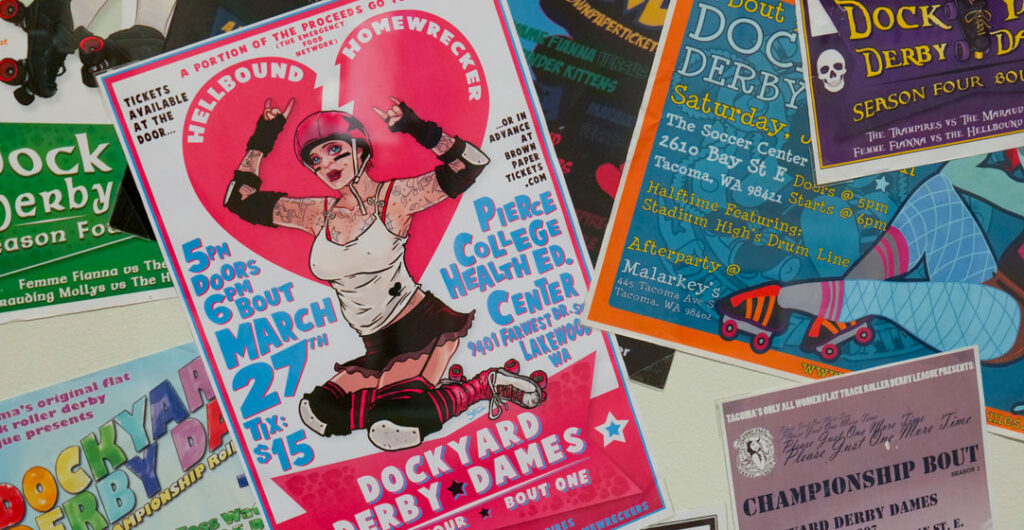
Did you know that the first roller skate was invented in the mid-18th century? And that roller skating has a place in the history of the women’s suffrage movement; that many of the first protests during the civil rights era weren’t sit-ins at all, but skate-ins?
In celebration of its long history — and the sheer joy of it — the Washington State History Museum in Tacoma is opening a new exhibit, “Skate: Rinks, Derbies & Discos in Washington Skate History.”
While putting together the show, museum staff immersed themselves in the history of roller skating to the early 1800s and the development of a vibrant Washington skate culture that remains to this day. Many local skaters have shared their photos and stories.
“I can’t stress enough how really wonderful skaters are,” said Gwen Whiting, lead curator for the Washington State Historical Society (who, by the way, learned how to skate as a girl at the former Pattison’s West rink in Federal Way).
“I hope that people come to this exhibition and learn something, but I also hope that they leave a little inspired — that they want to go out, put on a pair of skates, even if they haven’t skated in 10 years and, you know, have a good time!”
(And if you are planning to come see the exhibit, don’t forget that AAA Washington members receive a 15% discount at the Washington State History Museum.)
Whiting spoke more with us about the exhibit.
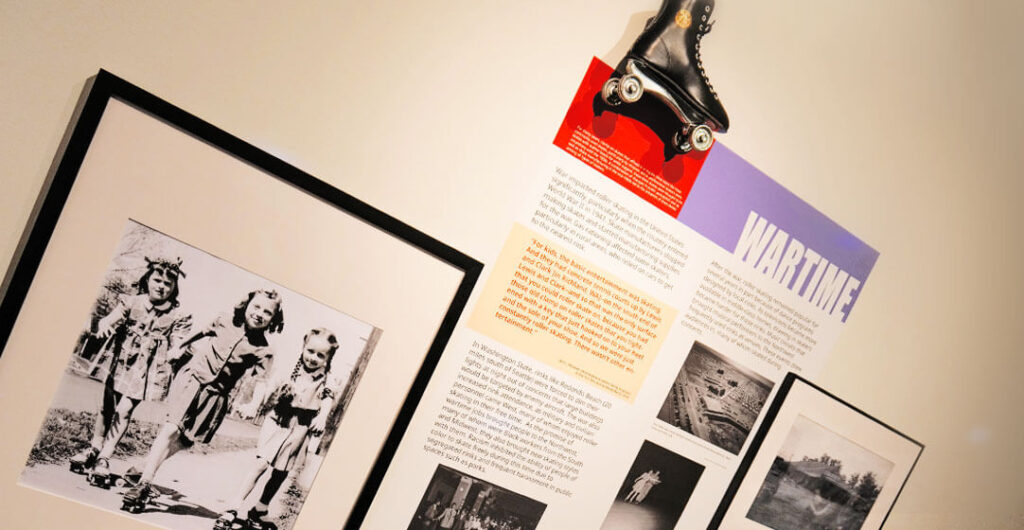
What can people expect to see when they come to the exhibit?
The exhibition talks about roller skating across time, with a secondary focus on Washington state specifically. We start all the way back in the 1800s, with the first establishment of rinks in Washington territory. And then we go all the way up through the modern day, including skating during the pandemic time.
The exhibit itself has a lot of hands-on components, a lot of opportunities to engage, everything from moments of discovery where you can open a door and see an image to places where you can actually move your hands across a series of wheels to understand friction and experience that feeling of movement. We have endeavored to make this not just an exhibition that you just walk through and look at things but also there are moments of touch scattered throughout the space.
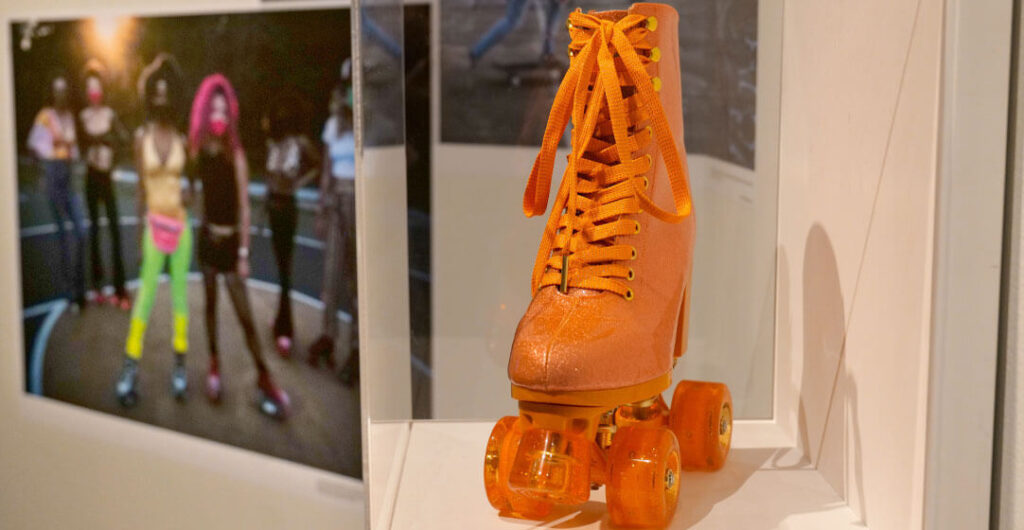
Could you talk a little about skate history?
It does go back a long time, and there are a lot of aspects of skate history. Washington, western Washington in particular, has always had a pretty high concentration of rinks up and down the I-5 corridor. People will have a home rink that they go to the most, but there is a lot of access up and down that route.
We also have a lot of skating, frankly, because of the weather. One of the things about having so much rain on this side of the state is that it brings people indoors. But because of the concentration, that also means we have rinks in other parts of the state as well. You find these really incredible stories of generations of families who have really focused on skating and building up not just the rink, but the community as well. It is a big part of Washington history, and why skating is popular here. And there are always skaters.
There is never really a time when you don’t see roller skaters ever since it started. It is just that sometimes it’s more mainstream than other times. So, one of the things that exhibit does is look at the rise and fall of skating in different eras, and how that happens and why that happens.
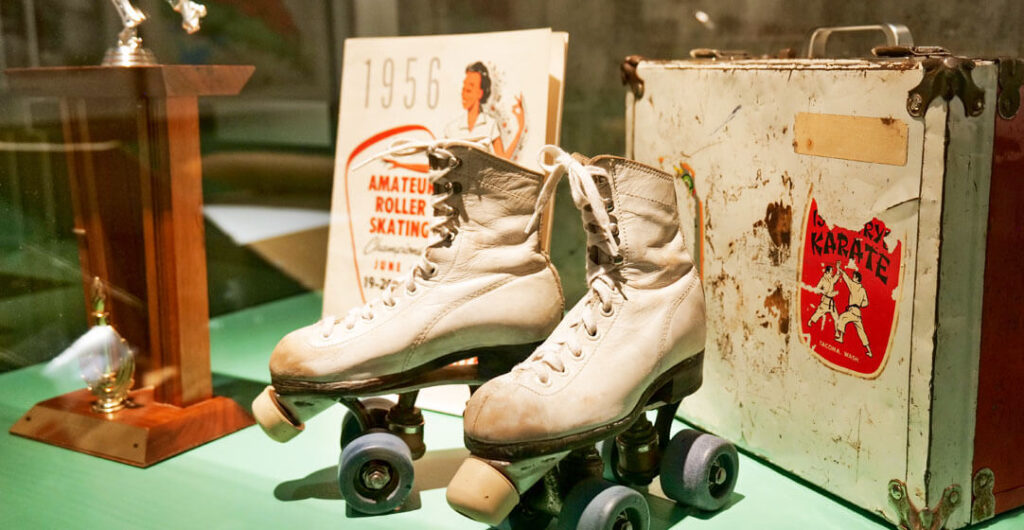
Why did the museum decide to tell this story?
Roller skating is a pretty inclusive story. A lot of people do it, a lot of people have memories of it. It has a really interesting history. Honestly, we knew about some of the aspects of this history but, of course, when you start researching an exhibition and you start talking to people, you realize how deep this story really goes.
And, on another level, it is a really fun exhibit. We have all come out of a period where everybody had difficulty making those community moments. And for a lot of people, outdoor skating was a way to be able connect safely, particularly during the lockdowns. There’s that aspect of it that we wanted to talk about, but there’s also simply the fact that roller skating is just a connecting memory for a lot of people, and we thought that it would be really interesting to explore that. Originally when we planned the exhibition, we weren’t necessarily thinking about it as a community-driven exhibition. But we opened it up to crowd sourcing on our social media and the response has been great.
The skate community is full of generous, wonderful, fantastic people, and we have had people from all over send us photos and stories or share their knowledge, and ideas and a lot of that content has made its way into the exhibition, and there are a lot of stories.
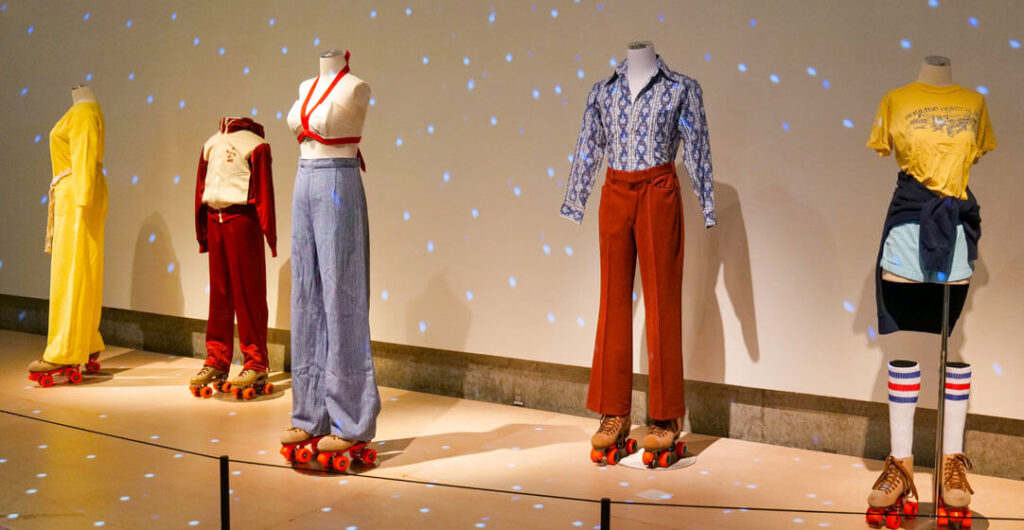
What are some of the political and social aspects of roller skating?
For many years, roller skating was one of the first sports that women could participate in as professional athletes. In fact, the first paid female professional athletes were in roller derby. A lot of people talk about the bicycle as an instrument of suffrage in that women were able to move more freely and so impacted their ability to carry messages and become activists and be part of the suffragist movement. But what isn’t often talked about is that the skate and skating predate suffrage. So, this idea of women being able to participate in an athletic activity and using that to communicate and to gather comes even earlier than the bicycle; it comes from the skating movement.
The other aspect of this, of course, is civil rights activism. A lot of demonstrations and protests in the early civil rights movement began at rinks. Some of the earliest sit-ins were actually skate-ins. You had Black skaters who would come to rinks and they would do a protest there — because people of color were excluded in Washington state. Not just African-Americans but also Asian-Americans experienced a lot of exclusion at rinks because of the prejudices at the time. And so you had these activists trying to open up the rinks.
And, of course, class impacts skating. One of the things we talk about in the exhibition is that there is a fair number of famous figure skaters that got their start in roller skating — because roller skating is a lot more affordable. At different points in its history, especially in its earliest points, skating was an elitist sport but, over time, because it became a lower-cost activity, it does open it up to a wide variety of people and social classes to participate in, in ways that other sports — because of expense, because of time, because of segregation — are closed off to those groups. And so, we talk about that as well.

Is skating culture alive and well today?
It definitely is. Pretty much everyone who I have talked to agrees on that point. Coming out of the pandemic there was a huge boom in outdoor skating, and a lot of people are still doing it — because it is a good way to come together, it is fun, it gets you involved in your community, it’s pretty accessible.
Some of the rink owners who I have talked to told me that they have had the best seasons ever in the many decades of their rinks, which kind of surprised me. It wasn’t something I expected to hear, that business was booming for them, because the other thing that has been in the news is rink closures. A lot of those closures aren’t necessarily related to the lockdown, a lot of those have to do with the rising price of real estate. A rink is a pretty big chunk of space.

One interesting story that was good to see is that when a really notable rink in Federal Way, formerly known as Pattison’s West, was being sold, its buyer, El Centro de la Raza, understood the importance of this rink as a community space; and so they purchased that rink and are turning it into a community space. It is not just a roller rink anymore; it is a community center.
It is interesting that the skating community sees this as an early model for what I think could happen more often: this understanding of rinks as places of community and important to preserve for more reasons than just recreation.
SKATE: Rinks, Derbies & Discos in Washington Skate History will run through Aug. 20. Open Tuesday–Sunday. Admission is $14 for adults; $11 for seniors, youth ages 6-18 and the military. Children 5 and under are free. (AAA members receive a 15% discount on two adult tickets.) The museum is free for all on the third Thursday of the month from 3-8 p.m.
—Written by Victor Whitman
—Top Photo: AdobeStock

Road Trip Tips
Before you go: Get ready for your road trip with a AAA Membership. Get peace-of-mind on the road plus travel and insurance services and much more.
Save on hotels and rental cars: Unlock savings on hotels with a AAA membership. Plus, AAA members save up to 20% with Hertz.
Save on car insurance: AAA members save up to 8% on car insurance.
Get battery service: AAA Mobile Battery Service uses state-of-the-art technology to accurately diagnose battery-related problems. We’ll even replace your battery with a brand-new one if necessary, at a special member price.
Save with AAA member discounts: AAA membership gives you access to exclusive entertainment discounts nationwide.









